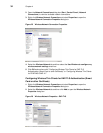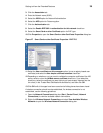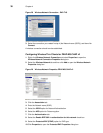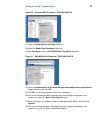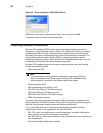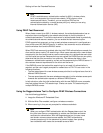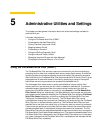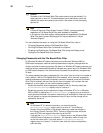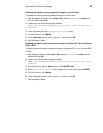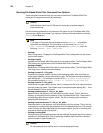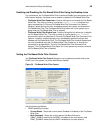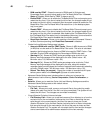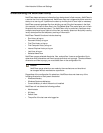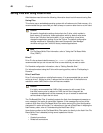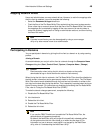
42 Chapter 5
Caution
Contents of the File Based Write Filter cache should never be flushed if it is
eighty-percent or more full. The Administrator should periodically check the
status of the cache and restart the thin client if the cache is more than eighty
percent full.
Note
A Terminal Services Client Access License (TSCAL) is always preserved
regardless of File Based Write Filter state (enabled or disabled).
If you want to have other registry settings preserved regardless of File Based
Write Filter state, contact Wyse support for help as described in "Wyse
Technical Support."
For more detailed information on using the File Based Write Filter, refer to:
• "Changing Passwords with the File Based Write Filter"
• "Running File Based Write Filter Command Line Options"
• "Enabling and Disabling the File Based Write Filter Using the Desktop Icons"
• "Setting the File Based Write Filter Controls"
Changing Passwords with the File Based Write Filter
On Microsoft Windows NT-based computers and on Microsoft Windows 2000 or
2003-based computers, machine account passwords are regularly changed with the
domain controller for security purposes. By default, on Windows NT-based computers, the
machine account password automatically changes every seven days. On Windows 2000
or 2003-based computers, the machine account password automatically changes every
30 days.
The same password process is applicable for a thin client if the thin client is a member of
such a domain. With the File Based Write Filter enabled, a thin client will successfully
make this password change with the domain controller. However, since the File Based
Write Filter is enabled, the next time the thin client is booted it will not retain the new
password. In such cases, you can use the following options:
• Disable the machine account password change on the thin client by setting the
DisablePasswordChange registry entry to a value of 1.
• Disable the machine account password change in Windows NT 4.0 or in Windows
2000 or 2003, by setting the RefusePasswordChange registry entry to a value of 1
on all domain controllers in the domain instead of on all workstations. Wyse thin clients
will still attempt to change their passwords every 30 days, but the change will be
rejected by the server.
Note
On Windows NT 4.0 domain controllers, you must change the
RefusePasswordChange registry entry to a value of 1 on all Backup
Domain Controllers (BDCs) in the domain before you make the change on
the Primary Domain Controller (PDC). Failure to follow this order will cause
event ID 5722 to be logged in the event log of the PDC.
If you set the RefusePasswordChange registry entry in the Windows 2000
or 2003 Domain Controller to a value of 1, the replication traffic will stop, but
not the thin client traffic. If you also set the DisablePasswordChange
registry entry to a value of 1 in the thin client, both thin client and replication
traffic will stop.



